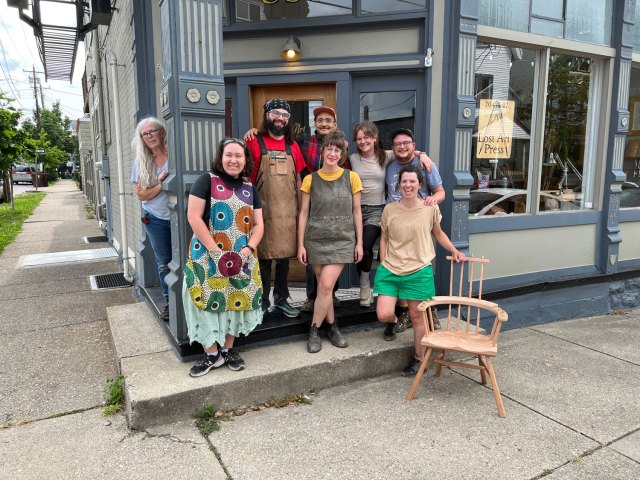
If you know anything about woodworking, I think you are qualified to teach it to others.
In my earliest days of woodworking as an adult, my friend Chris and I taught each other what we knew about woodworking, even though we each knew enough to fill up a thimble. In the early 1990s, I taught my neighbors how to make basic casework, even though I barely knew how to make basic casework.
I don’t think you need to be certified. I don’t think you need formal training. All you have to have is a little bit of knowledge and the willingness to share it with others.
During the last 15 years I’ve taught lots of people about woodworking in exchange for money. And I’ve observed a lot of woodworking teachers both good and bad. And I have picked the brains of people who are extraordinary teachers (thanks, Trevor). All in an effort to become a better teacher.
Recently I made a list of the principles I actively follow as I teach. You might find them useful if your neighbor Ed ever asks if you could show him how to build a radiator cover.
- Small bites of information. When explaining a technique, every lecture is as short as possible. Usually 5-10 minutes. Never ever longer than 20 minutes. My pattern is this: Present small amounts of information. Have the students act on it. Repeat.
- Teach without talking. Many of the lessons are embedded in the material and are not explicit. I might put cabinetmaker’s triangles on everyone’s stock. There will be no lecture about the triangles, but students will be required to use them. Later in the class I will reference them offhand while we are working. The students then understand them through use, and they are much less likely to resist or object to the material.
- Never do their work for them. I strive to never touch the tools or work of my students. If they make a near-fatal error I will ask them if they want help, but I will never insist or step in. If I have to I will (with their permission) take their hands and show them how to perform an operation or repair.
- Avoid having lines at machines or specialty tools. There is nothing worse than the line at the abattoir. When we have one tool for the class (say, a tenon cutter) that everyone has to use, I give the rest of the class two or three things they can be doing at the bench as they wait their turn.
- Draw the lesson. Demonstrate the lesson. Let them do the lesson. Sometimes information isn’t sticky enough. Or it takes a few attempts to get it in your head. To help this, I try to draw out every lesson on the board before a lecture. Then I demonstrate the lesson. Then I immediately ask them to do the operation. I also encourage them to photograph the lesson on the board to help them remember it.
- On praise and criticism. Praise and criticism is specific to the student’s work and always genuine. Point out what is right and wrong. Explain why. Some students will deflect both praise and criticism verbally. But they do hear it.
- Stop at every bench, every day of the class. Spend time looking at their work and listening to them talk about it.
- Warm up before every demo. Demonstrating when you are cold is difficult. If you have to tenon four legs, tenon one before the lecture. This ensures you will have all the tools you need at the bench and get your head in the right place.
- Understand the goal of each student. Some students want a trophy and no more. Others want skills and don’t care about the thing they are building. Both are valid approaches.
Finally, I try to learn from my students. Even a first-day woodworker can teach me something because they are coming at it with fresh eyes. Or without preconceived notions.
Oh, and tell stupid jokes. Make fun of your own failings. Show your flaws and shortcomings – even revel in them.
But most of all, teach.
— Christopher Schwarz